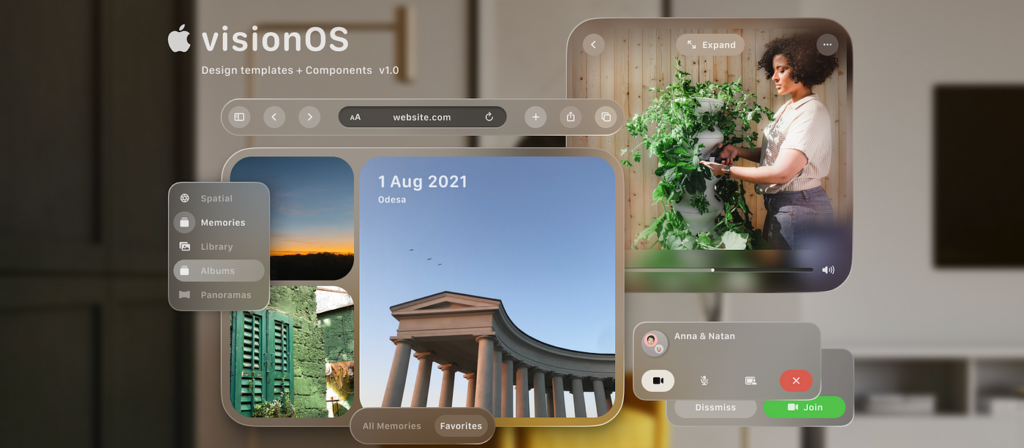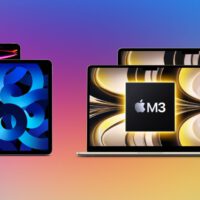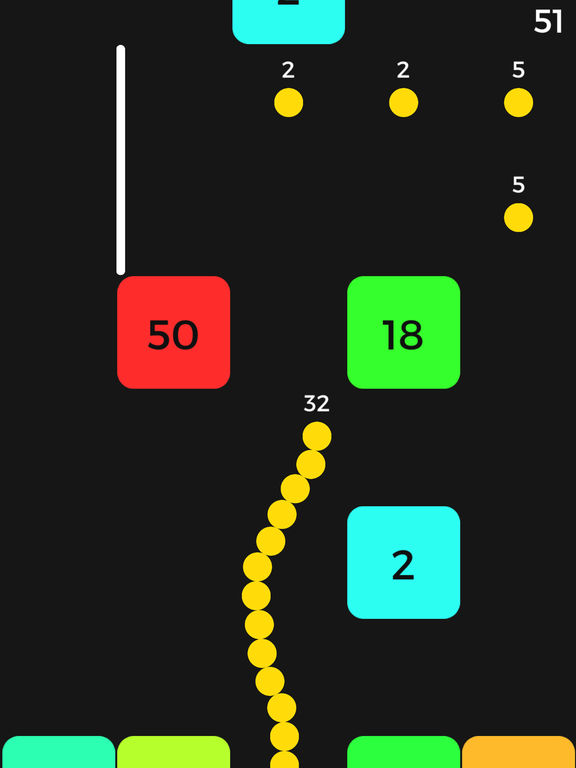
What is visionOS?
Apple’s visionOS, the operating system powering the innovative Apple Vision Pro, marks a significant leap in the realm of spatial computing and augmented reality. This platform, with its recent update to visionOS 1.0.1(the version released on launch day), presents a blend of advanced technology and user-centric design, setting a new standard in wearable computing.
Think of visionOS as the architect of this new digital landscape. It empowers developers to craft experiences that unfold before our eyes, not just on them. Imagine floating apps dancing around you, brainstorming sessions with your workmates, schoolmates held in virtual conference rooms around a coffee table? Check. Learning anatomy by dissecting a hologram on your kitchen counter? Done. Building 3D models with finger gestures as your paintbrush? Absolutely.
But visionOS isn’t just about flashy gimmicks. It’s built on a foundation of accessibility and inclusivity. Eye tracking, voice commands, and even head or wrist movements as virtual pointers ensure everyone can navigate this new digital ecosystem. Imagine the freedom for people with limited mobility to explore boundless virtual worlds or the joy of a visually impaired child experiencing the wonder of a 3D landscape through spatial audio.
visionOS offers developers a powerful toolkit to bring these dreams to life. Familiar frameworks like SwiftUI and ARKit evolve here, adapting to the infinite canvas of space. RealityKit takes center stage, enabling the creation of stunning 3D objects and environments that blur the lines between virtual and real. And for those wanting to bridge the gap between traditional apps and the spatial realm, “Windows” offer a familiar window into their familiar world, seamlessly coexisting alongside holographic creations.

Key Features of visionOS
- Advanced Spatial Computing: VisionOS transforms the way users interact with digital content, seamlessly integrating it with the physical world. It offers powerful spatial experiences controlled by intuitive inputs like eye movement, hand gestures, and voice commands.
- Unmatched Display and Audio Quality: Apple Vision Pro boasts an ultra-high-resolution display system, packing 23 million pixels into two micro-OLED displays. This ensures a vivid and immersive visual experience, surpassing the quality of a 4K TV for each eye. The device also features a sophisticated Spatial Audio system, offering a personalized and immersive sound experience.
- Eye Tracking and Security: The high-performance eye tracking system uses cameras and LED lights for responsive, intuitive input. For security, the Optic ID system utilizes iris recognition, ensuring privacy and security in authentication and payments.
- Accessibility Options: VisionOS includes comprehensive accessibility features, allowing interaction through various methods like eyes, hands, voice, or combinations of these. These features are customizable, catering to a wide range of user needs and preferences.
- Environmental Considerations: In line with Apple’s environmental commitments, the Vision Pro is designed with recycled materials and meets high standards for energy efficiency.
- Developer Support and ARKit: For developers, visionOS is a promising platform with robust tools like the visionOS SDK, Xcode, and Reality Composer Pro. ARKit in visionOS provides a comprehensive suite for creating AR experiences, offering capabilities like Plane Estimation, Scene Reconstruction, and Skeletal Hand Tracking.
- Pricing and Availability: The Apple Vision Pro starts at $3,499 in the U.S., available at all U.S. Apple Store locations and online. It comes with an array of accessories to enhance the user experience.










